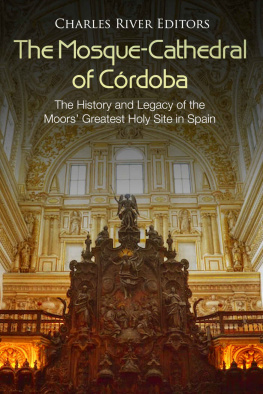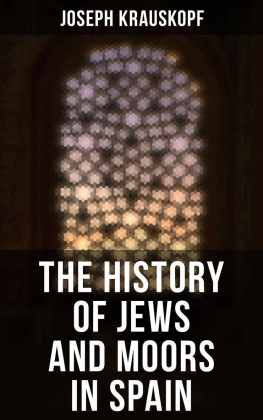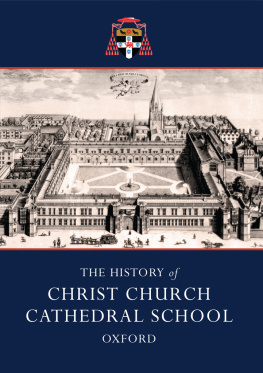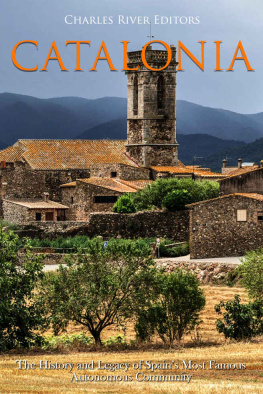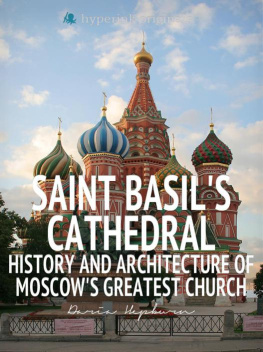The Mosque-Cathedral of Crdoba: The History and Legacy of the Moors Greatest Holy Site in Spain
By Charles River Editors
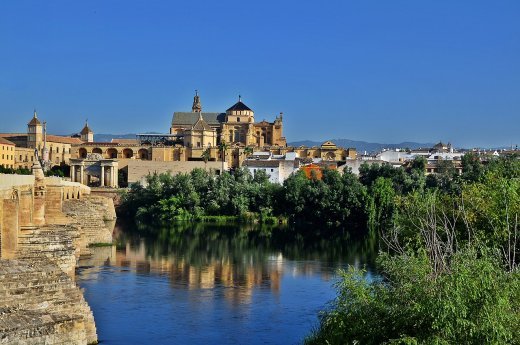
Amjad Sheikhs picture of the Mosque-Cathedral of Crdoba
About Charles River Editors

Charles River Editors provides superior editing and original writing services across the digital publishing industry, with the expertise to create digital content for publishers across a vast range of subject matter. In addition to providing original digital content for third party publishers, we also republish civilizations greatest literary works, bringing them to new generations of readers via ebooks.
Sign up here to receive updates about free books as we publish them , and visit Our Kindle Author Page to browse todays free promotions and our most recently published Kindle titles.
Introduction

Toni Castillo Queros picture of the Mosque-Cathedral of Crdoba
The Mosque-Cathedral of Crdoba
To Crdoba belong all the beauty and ornaments that delight the eye or dazzle the sight. Her long line of Sultans form her crown of glory; her necklace is strung with the pearls which her poets have gathered from the ocean of language; her dress is of the banners of learning, well-knit together by her men of science; and the masters of every art and industry are the hem of her garments... Stanley Lane-Poole, The Moors in Spain
The Calle Cardenal Herrero in Crdoba is an iconic cobbled street impossible to overlook, for it is home to the Andalusian city's spectacular Mosque-Cathedral. Also known as La Mezquita, this one-of-a-kind Moorish and Christian place of worship reels in about 1.5 million visitors each year, most of whom find themselves spellbound by its hypnotic architectural features and the riveting history that has transpired and continues to within the beautifully weathered walls of the dual-church. That said, the Mezquita is far more than a mere tourist attraction - in recent years, the Mosque-Cathedral of Crdoba has become the crux of a complicated religious conflict resurrected by impassioned worshipers and patriotic locals who fear not only for the future of its legacy, but the preservation of its true history.
It is easy for those on the outside looking in to make hasty judgments about the ongoing dispute, considering the endless amount of information that is uploaded online by the second. The contentious debates surrounding the Mezquita are often products of outdated prejudices, festering distrust, and whitewashing, all of which make it harder for the Mezquita to remain a non-discriminatory space serviceable to and appreciated by everyone today.
The Mosque-Cathedral of Crdoba: The History and Legacy of the Moors Greatest Holy Site in Spain offers a virtual tour of this priceless place of worship, and how it has been at the center of religious debates for hundreds of years. Along with pictures of important people, places, and events, you will learn about the Mezquita like never before.
An Ancient House of Worship
"For nearly eight centuries, under the Mohamedan rule, Spain set all Europe a shining example of a civilized and enlightened state. Her fertile provinces rendered doubly prolific, by the industrious engineering skill of the conquerors bore fruit a hundredfold, cities innumerable sprang up in the rich valleys in the Guadalquivir and the Guadiana whose names, and names only commemorate the vanished glories of their past. Stanley Lane-Poole, The Moors in Spain
The sacred ground upon which the Soul of Crdoba stands seemed destined from the beginning of time to house a majestic worshiping place. Well over 2,000 years ago, and approximately 989 years before the conception of the present Mezquita, this plot of land hosted a worshiping ground for the Romans who invaded Crdoba, or as it was known then, Crduba. The ancient Romans first came upon and conquered the lush and fruitful region of Crduba in the year 206 BCE, courtesy of Lucio Mario. This abrupt transition in power, dictated by the conclusion of what is now remembered as the Battle of Ilipa, saw the Romans lay claim to virtually all of the Guadalquivir River Valley. Lucio Mario, who had spearheaded the successful campaign that drove out the Iberians at Alcala del Rio (close to what is now Seville), proceeded to erect the first Roman establishment there, a town they christened Itlica.
For the next seven centuries, the Romans reigned over the region, and by 152 BCE, Itlica, now under General Claudio Marcelo's rule, had become recognized as a colonia and was the capital of the Roman province known as the Hispania Ulterior. The city settlement had transformed into the Romans' chief military base during their war against the Lucitanian leader, Viriathus, and two of the milestones a pair of stone pillars that served as signposts that once marked the ancient cities of Carmo, Seville, and Tarraco via the Via Augusta now flank the main entrance of the Mosque-Cathedral.
As Itlica continued to flourish, the Romans continued to build settlements throughout the terrain, including one founded at the Andalusian port of Crduba, by the furthermost limits of the Guadalquivir River. The port bustled with activity, enlivened by merchants hawking their products and large vessels brimming with olive oil, wine, and other exports en route to Rome.
As a token of gratitude to the gods who had aided their victory over the Iberians and continued to watch over their thriving Spanish settlements, the Romans produced various temples to a number of deities. One of the grandest temples, devoted to the god Janus, was built opposite the still-standing Roman Bridge of Crdoba on the Guadalquivir. Some have asserted this temple stood right where the Mosque-Cathedral now stands.
According to the Romans, Janus, the god of beginnings, januae (doorways), and jani (archways), was the same deity who fathered Tiberinus with the nymph Camasene, and Tiberinus became the inspiration behind the name of the Tiber River. This powerful deity was depicted with either two or four faces, the latter of which symbolized the spirit of the 4-way arch. To the Romans, his unique and literally multi-faceted appearance allowed him to see simultaneously what was in front and behind him.
Strategic points in Rome, as well as its fringes, were guarded by several freestanding ceremonial archways that soldiers and civilians passed through to enter and exit the city. The Janus Geminus, situated to the north of the Roman Forum, also doubled as a shrine for the god, and was as such among the most frequently used by Roman armies. This rectangular bronze block is punctured by double-doors, or two arch-shaped openings on either side of it. Soldiers marched from one end of the structure to the other in ritualistic fashion before venturing out to battle, not only paying tribute, but requesting blessings of good fortune from Janus. Legend has it that the double-doors of the Roman jani were kept shut during times of peace and left open during times of war. Given the turbulence of the political atmosphere and the barbaric problem-solving tactics generally employed during this era, it was rarely the former case.
While Janus is most commonly affiliated with the guardianship of all entrances, travelers, and new beginnings, the 5 th century historian Macrobius also characterized the deity as an intellectual and devout being who was once awarded honors for his piety. This is all the more noteworthy in light of the fact the spot became a Moorish intellectual center centuries later.

